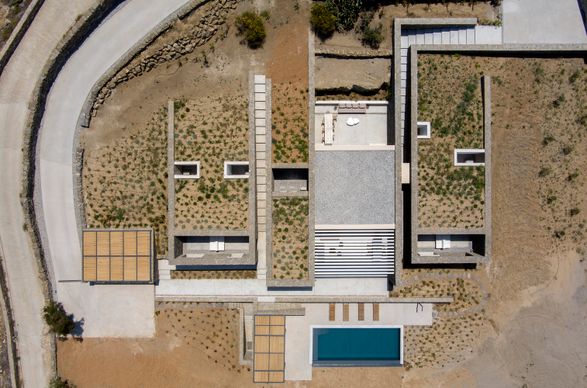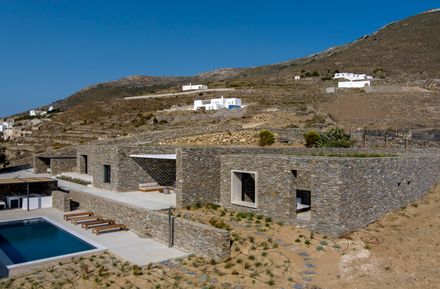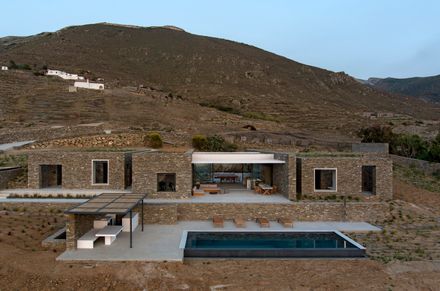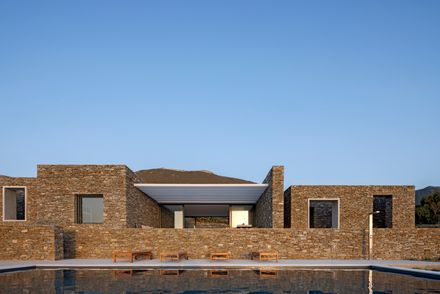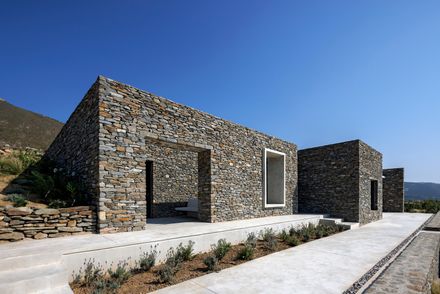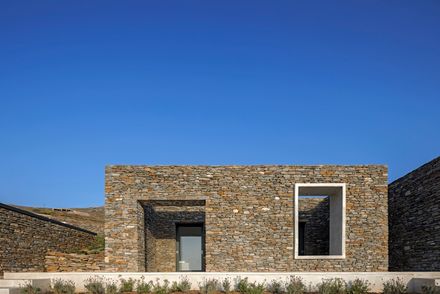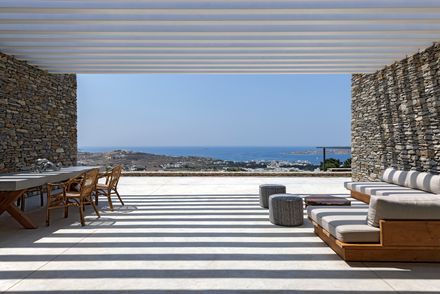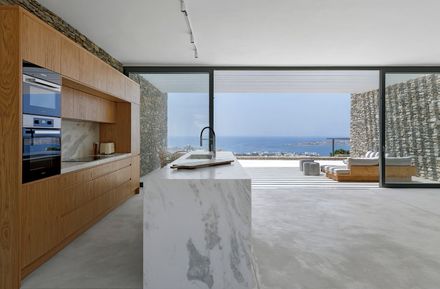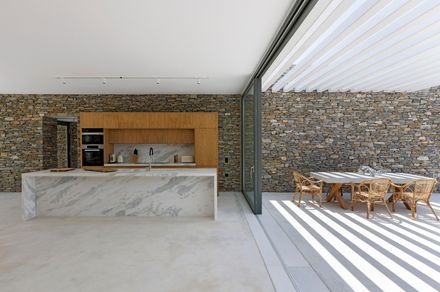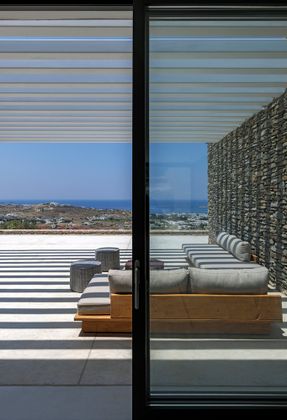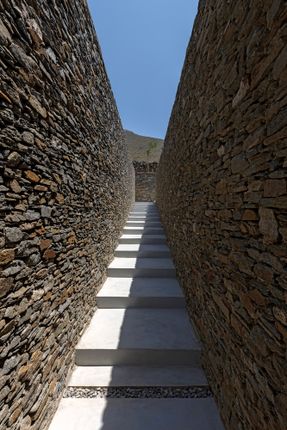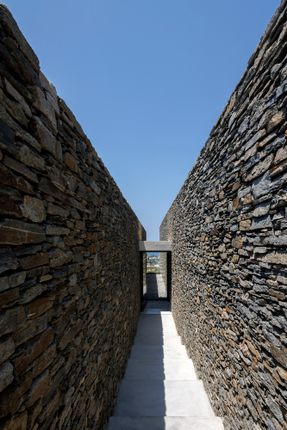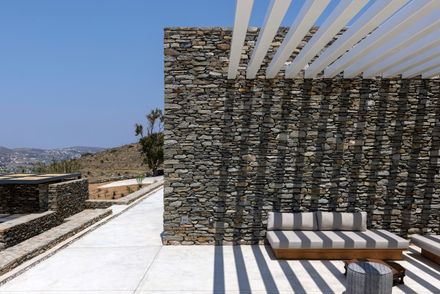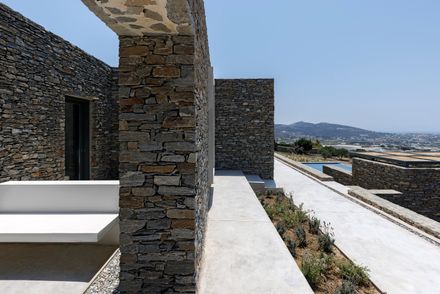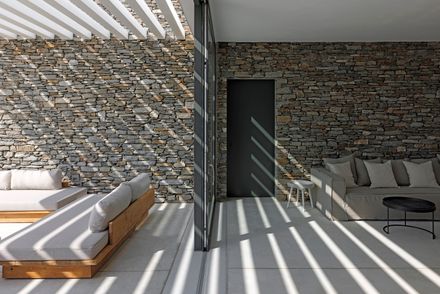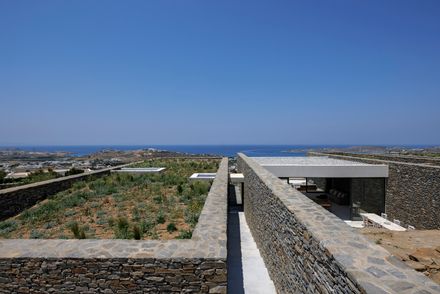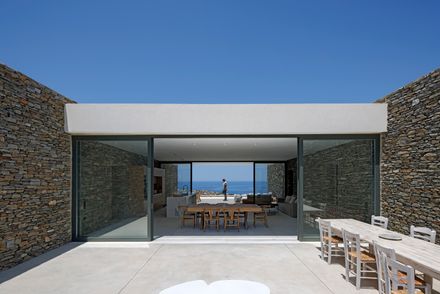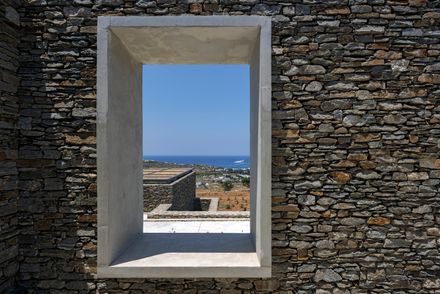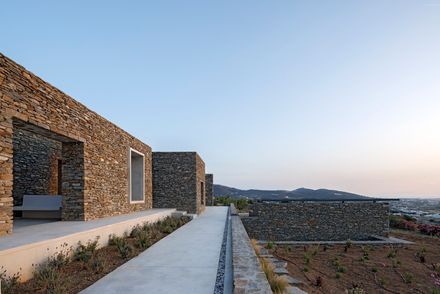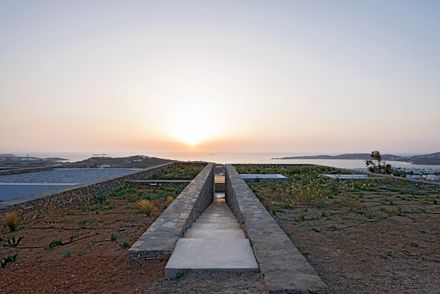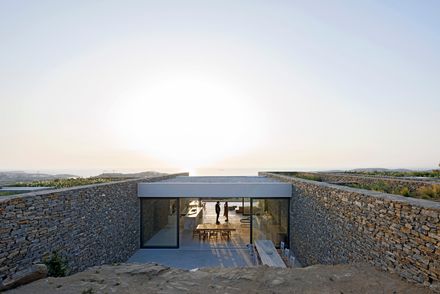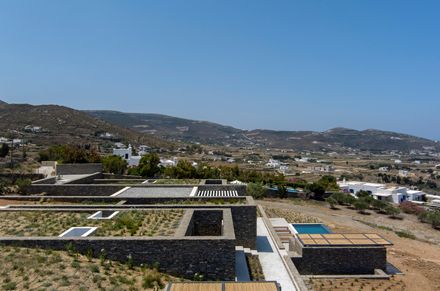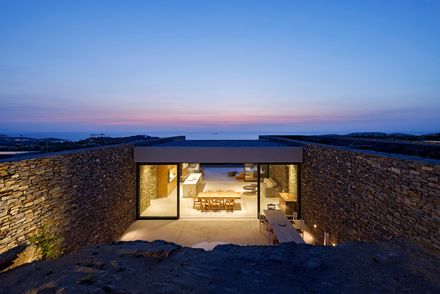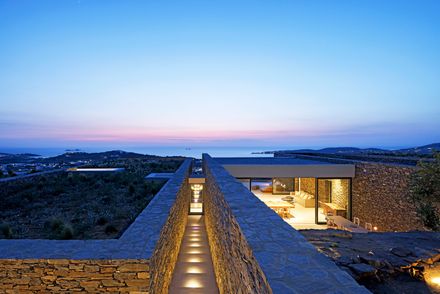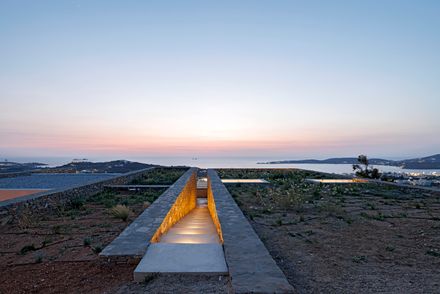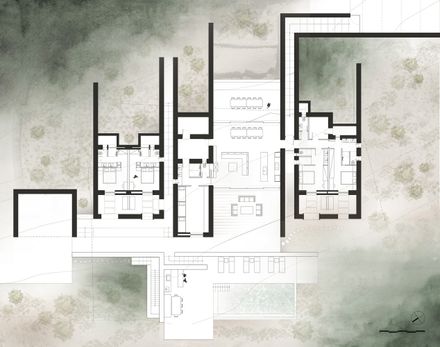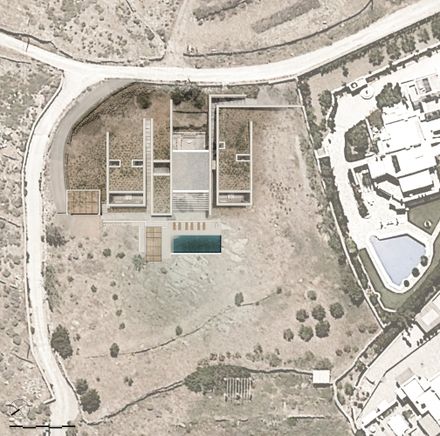
PetrA Home
ARCHITECTS
React Architects
LEAD ARCHITECT
Natasha Deliyianni, Yiorgos Spiridonos
DESIGN TEAM
Nikoletta Georgopoulou, Sofia Fika
TECHNICAL TEAM
Yiannis Vagias
LANDSCAPE ARCHITECTURE
Outside- Eva Papadimitriou
STRUCTURAL
Paros Prime Real Estate & Construction
MANUFACTURERS
Kritikos Wood, Nikos Kallergis, Perfect Pools, SMK GROUP-PAROS
MEP
Vasileios Zotos
PHOTOGRAPHS
Panagiotis Voumvakis
AREA
250 m²
YEAR
2022
LOCATION
Paros, Greece
CATEGORY
Residential Architecture, Houses
English description provided by the architects.
And he drew threads through the stones and brought forth schist from earth gut's he fixed in place the wide stairs all around the hillside.
There alone he laid | White marble fountains | Small pink coupolas | And tall perforated dovecotes | Virtue with its four right angles | And as he thought it beautiful to be in each other's arms the big water filled with love - "Genesis" in The Collected Poems of Odysseus Elytis; Translated by Jeffrey Carson and Nikos Sarris; Published by The John Hopkins University Press, 1997.
The vacation home, accommodating five bedrooms and a central living area, is in Kakapetra, on Paros Island; its location features a westward orientation that enjoys panoramic views over Parikia Bay and the open sea.
The design drew inspiration from the dry-stone walls and geological formations of the area, seamlessly blending into the landscape like a stone structure that harmonizes with its surroundings.
The site is marked by clusters of rocks and preeminent geological formations; its byname, "Kakapetra," etymologically translates to "rugged stone" or a place marked by the prominence of stone concentrations.
The rocky terrain hindered agricultural cultivation, leading these regions to be primarily utilized for animal herding, allowing livestock to be contained and roam away from cultivable lands.
In such a context, the residence takes shape and evolves, utilizing the excavation's stone. Traverse walls that face towards the view create passages, entry stairs, longitudinal vistas, and living spaces.
These walls mold the building adjacent to the landscape, the place, the stone. While traditional retaining walls, the "pezoules," evolve in parallel with the topography and elevation relief, the residence's walls penetrate the ground, emerge from it, and subsequently shape living spaces.
The entrance is located on the eastern side of the plot, at its highest point. As the walls traverse and intersect the dwelling, enclosed courtyards are formed on the western side to protect the bedrooms and establish areas of privacy.
The roof slab, made of visible concrete, rests upon the stone walls and shelters the living space. The rock, the landscape, permeates the interior and then turns toward the view and the sea.
The expansive pergola, as an extension of the reinforced concrete covering, merges the interior and the exterior, unifying the rock, the living room, the courtyard, the view, and the sea into a single sequence.
Roofs are complemented with soil for planting, allowing the local flora to continue its journey downhill through and over the building.
A spatial interplay, a succession of events, shapes a contemporary living experience. The building, as a material entity, takes on a secondary significance in relation to the movement, circulation, passages, and room created for human dwelling.
The residence serves as a continuation of the natural terrain, declaring its presence through the simplest form of stone walls that demarcate human intervention.
These walls, expanding across the plot, invite residents to enter the structure from various points, disregarding conventional pathways in a typical rural dwelling.
The architecture, adopting a modest and reverent approach, doesn't clearly define the space but extends its boundaries, without overshadowing the arid, rocky environment.
The relationship between humans and the stone, as well as nature, constitutes the rationale behind this architectural endeavor.
The imprint remains minimal, celebrating the singular Cycladic location. The Nobel laureate Greek poet, Odysseas Elytis, in "Genesis," delves into the creation of the world, particularly the Greek landscape.
He commences by asserting that the genesis is the light that inundates the Greek archipelago. Proceeding through cosmogony, he speaks about the stone, from which this specific work draws inspiration.
The sanctity of this place, which encompasses millennia of civilization, guides the architectural intervention, imposing a humble yet simultaneously sincere approach to the Landscape, through a personal interpretation.


